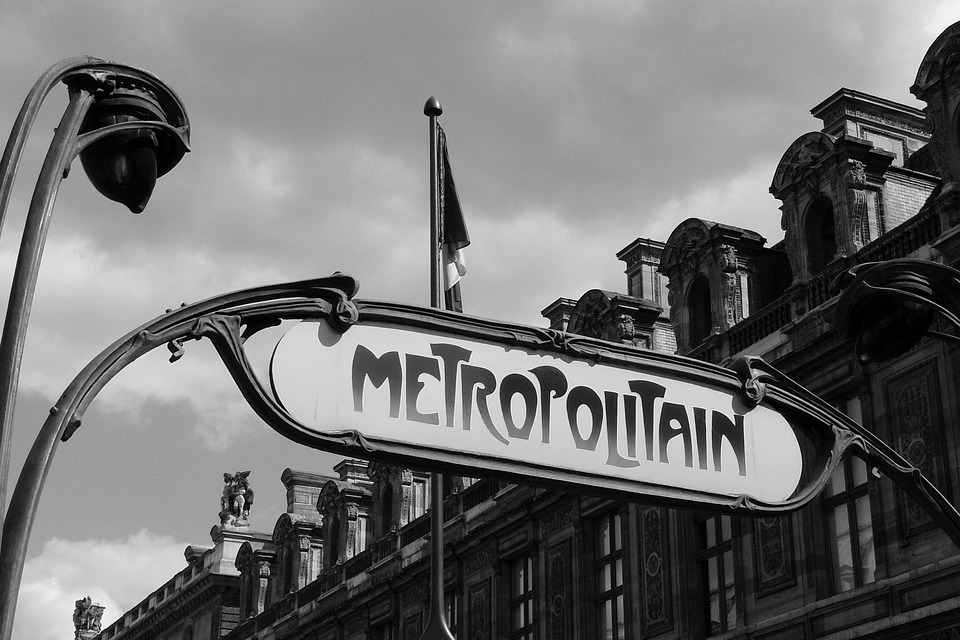Navigating the public transportation system in Paris can seem like a daunting task at the best of times. There’s trains, buses, and trams to choose from, and just the trains themselves come in a wide variety of networks. The Metro serves central Paris, while the RER and SNCF commuter trains serve the greater Île-de-France region. And in the face of all this, I don’t blame people for reaching for their Uber app to get around. But as anyone who has ever faced Parisian traffic will tell you, using a car is often the least efficient way to get around the city. That’s why over the years I’ve come up with my own list of Laura’s Rules for Surviving Public Transport in Paris. Rules that I’m sharing with you now so that you don’t have to learn the hard way like I did. Like leaving behind your jet lagged mother on a random Metro platform in the middle of Paris because you ran for a train and she didn’t. So on that note…
1 – Running for the Metro
It’s never necessary to run for a Metro train, because unless you’re catching the Metro at 5:30AM, the next train will come along in just a couple of minutes. Unlike the RER and SNCF trains, the Metro is not scheduled, but at peak hours, trains arrive every 2-3 minutes, meaning you never have to wait long on the platform. This level of frequency means that my threshold for waiting for the next train is now down to just four minutes, after which I start to get annoyed and impatient. And yes, I am well aware of how spoilt I am in Paris on that front.
2 – Opening Doors
On certain Metro lines, the doors need to be manually opened, either by pushing a button or pulling a handle. They also have the unusual characteristic of opening before the train comes to a complete stop. If you have an extraordinary sense of balance, feel free to attempt to exit the train while it is still moving. But fair warning. If your balance is even the least bit less than perfect, you could find yourself arriving on the platform face first. Not that I know this from experience or anything…
3 – Know Thy Neighbour
It is easy to know which lines serve the tourist hot spots of Paris, because these are the lines that make their announcements in multiple different languages. If you happen to find yourself on one of these trains, be prepared to get to know your neighbours really well, because they are often packed to the brim.
4 – Watch for Pickpockets
On that note, if you hear an announcement warning for pickpockets, resist the urge to immediately pat your valuables through your clothes to check to see if they’re still there. If you don’t, you may as well have a neon flashing arrow pointing out their exact location to any would be thieves.
5 – Travel Directions
When traveling on the Metro, it is important to know the end destination of the direction you wish to travel. Most stations will have signs that list all of the stations each direction will serve. But once you’re in the connecting tunnels in between lines, you’re often only given the end destination for navigation. I’ve learned this lesson the hard way on more than one occasion, and it’s invariably always when I’m running late.
6 – Know Your Pricing
A single ticket for the Metro will take you to any other Metro station, regardless of how many zones you pass through, but the RER and SNCF trains are priced station to station. Therefore, if you have to travel to a location outside of central Paris on the RER or SNCF, always check first to see if there’s a Metro stop nearby. It may mean you have to walk an extra ten minutes to reach your destination, but the savings on your ticket could be pretty significant.
7 – Follow the Footsteps
There are several main train stations where multiple lines of the Metro, RER, and SNCF converge. And as you can imagine, these stations are sheer madness at peak hours, especially given that their layouts aren’t particularly conducive to effective traffic patterns. Some of these stations, such as Saint Lazare, have placed colour coded footsteps on the floor to guide you to your proper destination. If you find yourself at one of these stations during peak hours, keep your head down and follow those footsteps. It’s the only way you’re going to get anywhere.
8 – The Art of Disembarking
Speaking of traffic patterns, Parisian trains are often packed, even if it’s not peak hours, so getting on and off is a survival sport unto itself. The magical word you need to know is “Pardon”, because as long as you say that, people will generally move out of your way for you to exit. However, the same cannot be said for those trying to enter the train. For some inexplicable reason, Parisians can’t seem to understand the concept of letting everyone off before trying to get on. This means that if you’re on a busy train heading into a busy station, brace yourself, square your shoulders, and be prepared to push your way off.
9 – Every Last Seat
I may be alone in this thinking, but when I’m on public transit systems, I will often choose to stand instead of forcing myself into the one available seat in the corner that will require me to step over half a dozen people to get there. Parisians do not share this line of thinking. If there is an empty seat on the Metro, no matter how inaccessible it may be, they will climb over half the train to get there. It really is quite the phenomenon, and it has kept me entertained on many a Metro ride.
10 – Keeping Yourself Entertained
Some Metro trains are comprised of a series of connected cars, while others are one long train, in which you can walk from end to end. If you find yourself on one of these trains, I suggest finding a spot at either the front or the back. If it’s not too crowded, you can see right down the middle of the train, which allows you to watch how the Metro lines twist and curve their way through the underground of Paris. I find this visual fascinating, but it could be that I’m just easily amused.
Bonus
As any Parisian will tell you, if the trains are on strike, all bets are off and all the rules go right out the window. So if you’re visiting Paris in the near future, keep your fingers crossed for no “grèves”. For the rest of us locals, good luck!
Laura Moore is a professional storyteller who loves history and the many stories that make Paris one of the most fascinating cities in the world. Join one of her signature tours to learn the story of a city.




